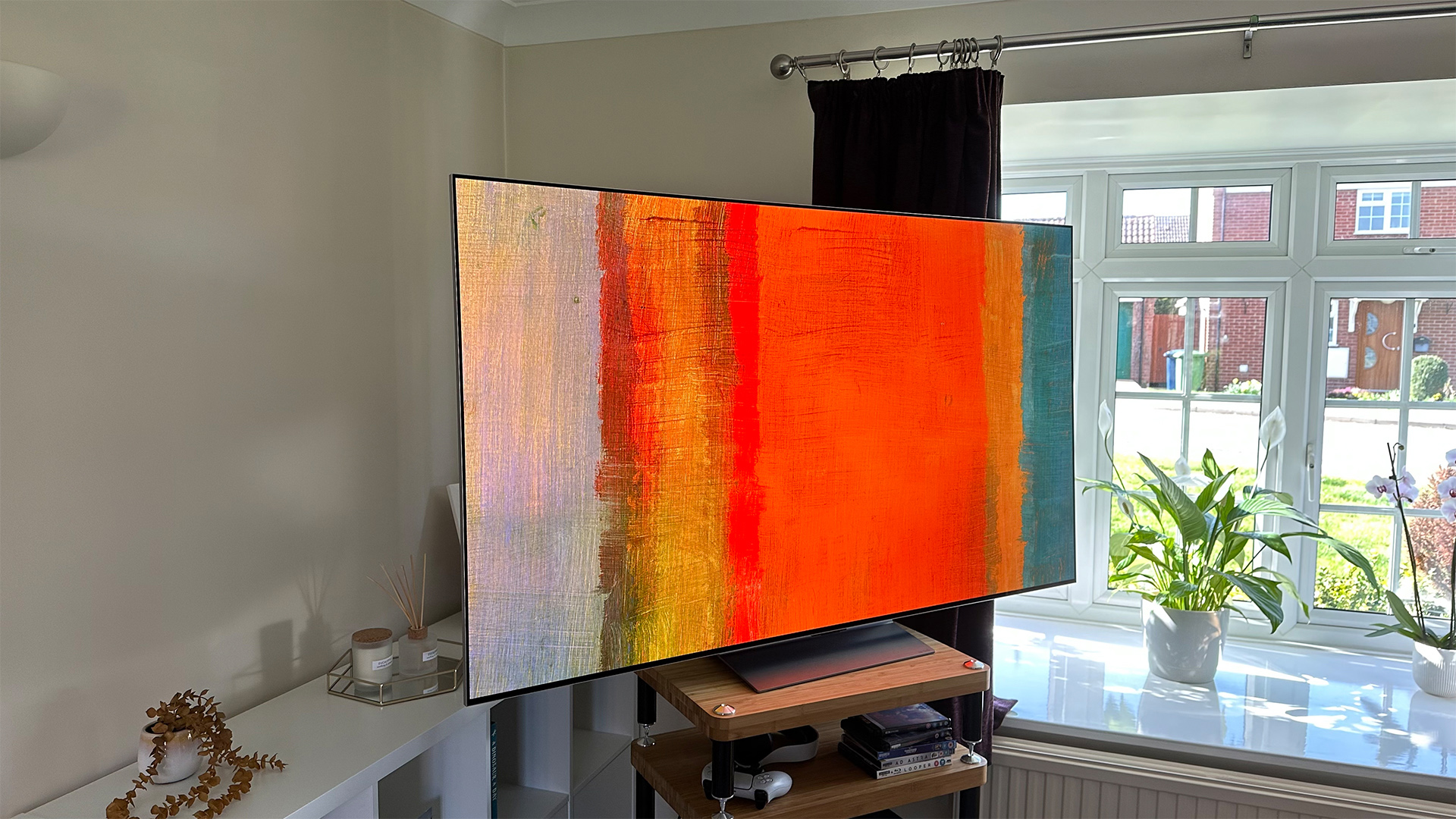What Hi-Fi? Verdict
Soft sound and some pale colours in low light aside, the G3 is a dazzling upgrade on the already excellent TV it replaces
Pros
- +
Brilliantly bright and vibrant highlights
- +
Generally balanced and natural
- +
Flawless gaming specs
Cons
- -
Pale colours in low-light scenes
- -
Dull sound
- -
Doesn’t come with a stand
Why you can trust What Hi-Fi?
The arrival of a new G-series OLED is always cause for excitement, and the G3 is an even bigger deal than its forebears. That’s because it’s the first OLED TV that features Micro Lens Array (MLA) technology, which is said to increase brightness (long considered by some to be a weakness of OLED) to levels previously only achievable by backlit TVs.
It’s worth noting from the off that the 2000+ nit brightness figures that have been bandied around for the last few months will only be seen by those brave enough to gaze upon the G3’s garish and aggressively processed Vivid mode, but the set’s extra capabilities are still pretty plain to see in the more cinematically accurate presets.
In other words, if you pick up a G3 expecting retina-searing images, you could be disappointed. Those of us with more authentic and, dare we say it, discerning tastes, will find that the G3 is very much like the G2, only even better. Although there are a couple of caveats…
Price
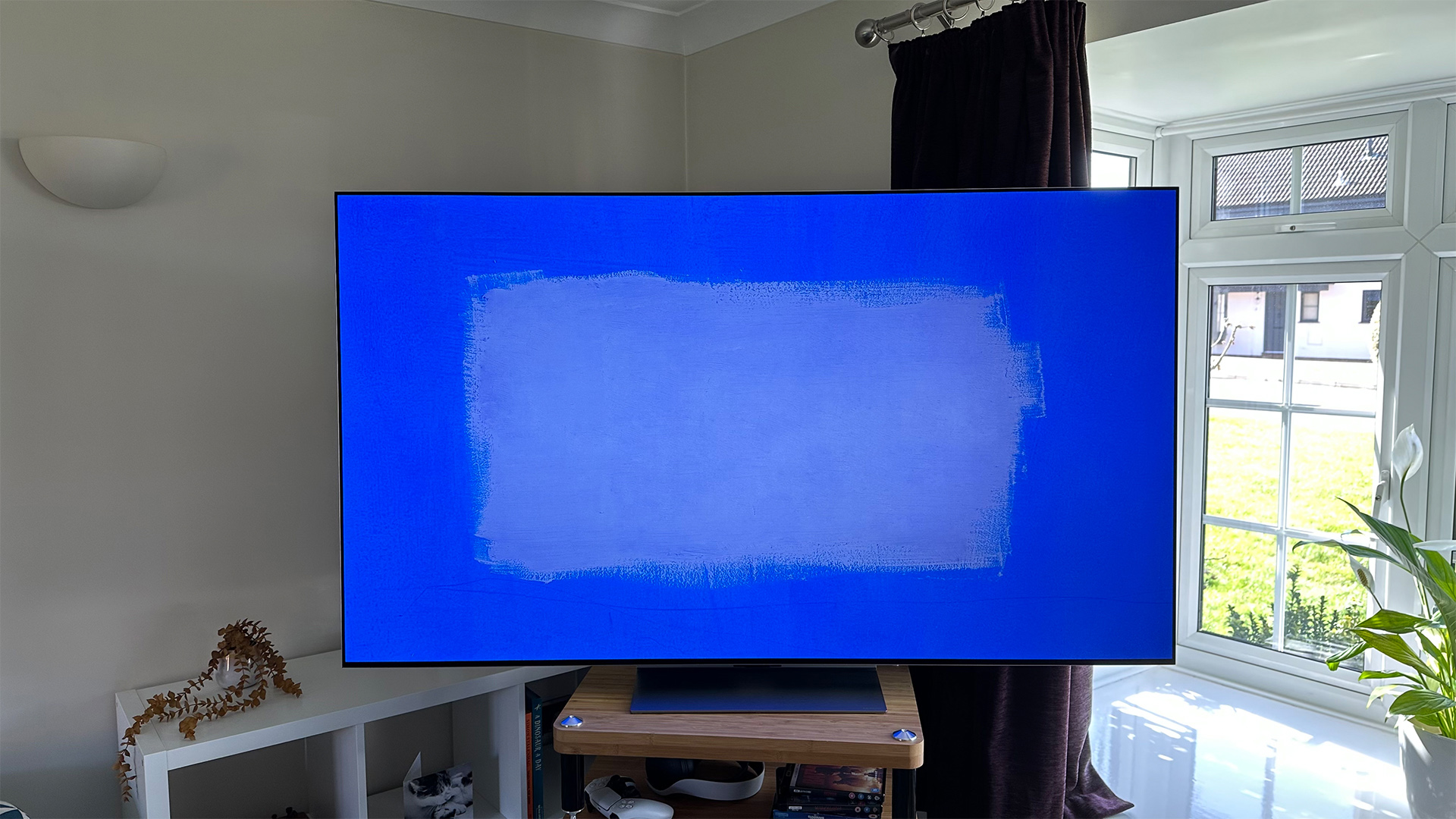
In a surprise to almost no-one, the LG G3 is more expensive than the G2 it replaces. The 65-inch G3 on test here is priced at £3500 / $3300 (around AU$6500), whereas the equivalent G2 launched at £3300 / $3200 / AU$5295.
While the price increase is undeniably disappointing, it's notable that the 65-inch G3 undercuts its most likely rival this year, the Samsung S95C, by £99 in the UK, and matches it exactly in the US (pricing for Australia hasn't yet been revealed).
One question that's asked every year is how much more the G-series model costs over its C-series equivalent. This year, you'll need to find an extra £600 / $700 (around AU$1100) to buy the 65-inch G3 rather than a 65-inch C3.
Design
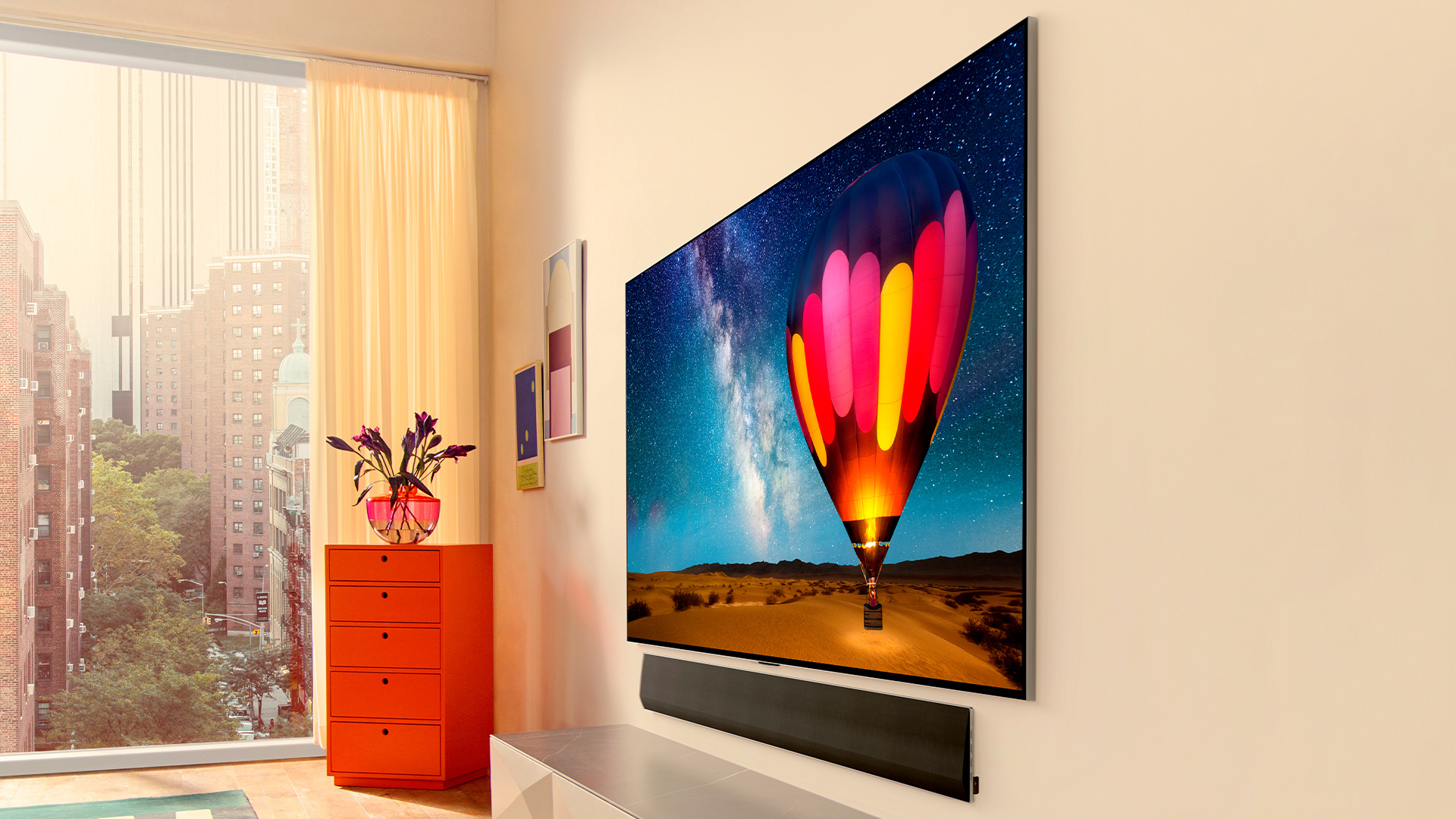
If you’re familiar with the design of the G2 you can probably go right ahead and skip to the next section, because the G3 looks more or less identical to its predecessor.
The stepped design to the edges that was introduced last year returns so that there’s a slight gap between the set’s edges and the wall even when using the so-called Zero Gap wall mount, but otherwise the set has a uniform thickness of just 2.4cm.
Said wall mount is included in the box but, as before, a tabletop stand is not. This remains as frustrating as ever, particularly as the official pedestal stand (seen in our photos) will almost certainly cost in the region of £100 / $150 / AU$300, although you could alternatively pick up a more affordable third-party stand that attaches to the set’s standard VESA mounting points.
The one difference that is visible when you have the G3 and G2 side-by-side is that the G3’s screen, when off, has a slight bronze tint. That’s because it has a new and significantly more effective anti-reflective coating. With the set switched off, you can of course see some reflections on the screen, but they’re significantly less pronounced than those on the G2 and it’s very rare indeed that you’ll spot any when watching a movie or playing a game.
Features
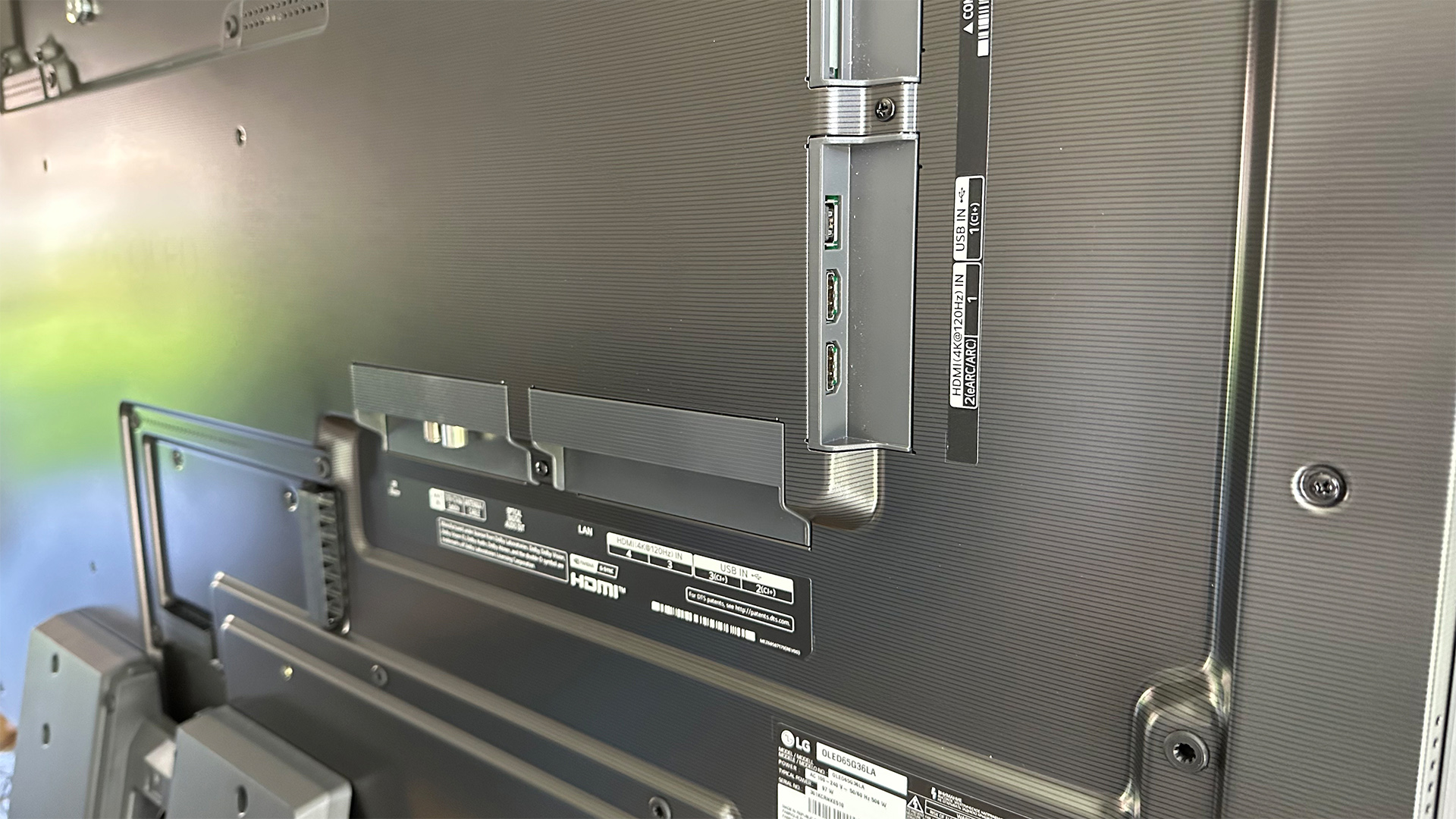
The big talking point here is obviously the G3’s new MLA technology. Put simply, this is a layer consisting of billions of microscopic lenses (sometimes adorably referred to as 'lenslets') that are added to the panel in order to focus the light from the OLEDs themselves.
One of the key points here is that MLA can increase the light we see without the OLEDs themselves needing to produce any more light than they did before. This is important because over-stressing OLED materials is what can lead to image retention or burn-in. The G3, like the G2, also features a heatsink that allows the OLEDs to be pushed brighter than they are in standard OLED TVs such as the C2 and C3, again without any increased risk of burn-in.
In summary, the G2 was already one of the brightest OLED TVs available, and the addition of MLA technology promises another big leap forward in this regard. How big? LG claims that the G3 is capable of hitting a peak brightness figure of "roughly" 2040 nits when in its HDR Vivid mode, and 1470 nits in its more accurate HDR Cinema preset. Last year’s G2 was capped at around the 1000-nit mark when in HDR Cinema, so we’re potentially looking at a huge increase in brightness.
Of course, that extra brightness needs to come without sacrifices elsewhere. The fact that this is still OLED technology means perfect blacks and pixel-level contrast control are still essentially givens. Still, some concern has been expressed about traditional OLED’s ability to recreate vibrant colours in the brightest parts of a picture thanks to its reliance on a white sub-pixel – something that QD-OLED doesn’t have. We’ll of course be addressing this in the picture section below.
The panel is only one piece of the TV picture puzzle, with processing another. Inevitably, LG has a new processor for 2023, the Alpha 9 Gen 6, which adds a number of new features, including AI Super Upscaling Pro, which is designed to upscale sub-4K sources while reducing noise but preserving intentional film grain; OLED Dynamic Tone Mapping Pro, which breaks the image down into 20,000 zones (rather than the 5000 of before) for separate HDR optimisation; Object Enhancer, which sharpens foreground characters and props; and HDR Expression Enhancer, which applies specific tone mapping to those foreground elements.
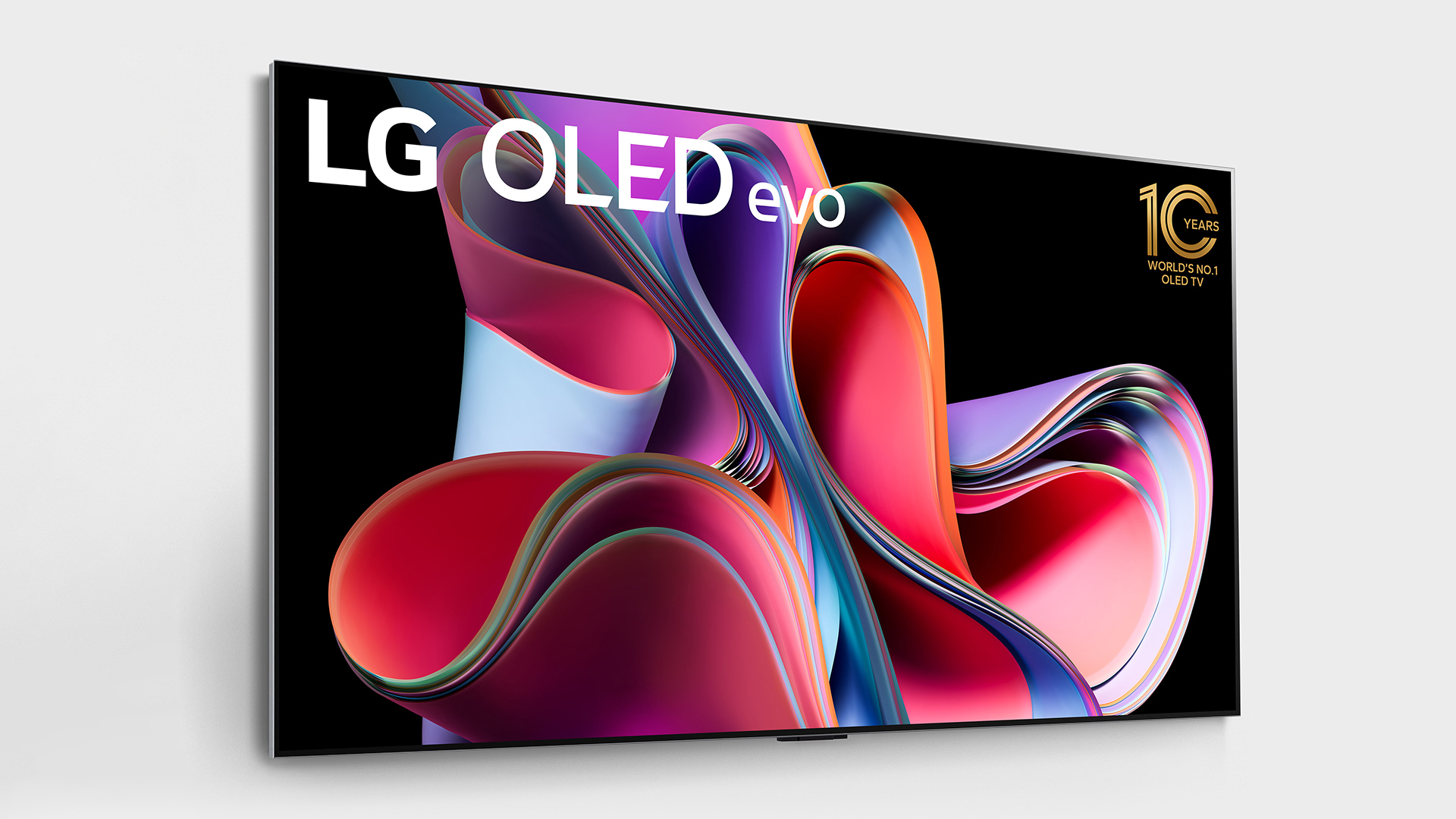
Screen size 65 inches (also available in 55in, 77in, 83in)
Type OLED
Backlight N/A
Resolution 4K
HDR formats HLG, HDR10, Dolby Vision
Operating system webOS 23
HDMI inputs x4 (4 x 48Gbps HDMI 2.1)
Gaming features 4K/120, VRR, ALLM, Dolby Vision game mode, HGiG
ARC/eARC eARC
Optical output? Yes
Dimensions (hwd, without stand) 82 x 144 x 2.4cm
On the audio front, the new Alpha 9 Gen 6 chip adds up-mixing of all sound formats to 9.1.2 (up from 7.1.2 last year), and a new Auto Balance Control feature that attempts to prevent certain frequencies from being drowned out by others so that, for example, midrange voices aren't smothered when bass increases.
Taking a leaf out of Samsung's book, LG is also introducing a feature that allows its new TVs and soundbars to work in harmony so that the TV's speakers aren't simply disabled when the soundbar is connected but remain on and are optimised in order to enhance the soundbar's sound.
Finally on the list of changes for 2023 is a new version of the webOS operating system. webOS 23 doesn’t look vastly different to the 22 version at first glance, but its home screen has been reduced from several pages to just two. LG acknowledges that scrolling through multiple pages could prove sluggish thanks to the constant caching of the various rows of content, and that has been entirely fixed with this new iteration, which is very snappy and responsive in use.
In order to reduce the page count, LG has moved most of the rows of the old webOS into folders, which it refers to as 'Cards'. So, for example, there’s a card called 'Game', within which all of the TV’s gaming-related apps (GeForce Now, Utomik, Twitch etc) are gathered.
It’s a sensible system overall, but we’re not sure that the row of cards should necessarily be the most prominent one: the great thing about the card system is that it doesn’t clog up your home screen with things that aren’t personally relevant to you, but having the card row so prominent means that they still are, in a way, and it’s easy to imagine that plenty of buyers will never click on them. We would have thought it more sensible to have the trending and app shelves first, as they were last year, and have the second page more or less dedicated to cards. Of course, if half of the front page wasn’t given over to promotional banners, there’d be lots more room for genuinely useful content.
Almost nothing has changed on the gaming front, but it didn't really need to. Like so many of its predecessors in LG’s OLED line, the new G3 has four HDMI 2.1 inputs that support 4K/120Hz, ALLM and VRR. This is still going to be a rarity in 2023, as sets from all other manufacturers except Samsung will have two HDMI sockets at most. Dolby Vision gaming is once again supported right up to 4K/120Hz (this will become a little more common this year), and the HGiG mode, which results in more accurate HDR tone mapping with many games, returns and is brilliantly implemented once again. Input lag is unchanged at around 13ms for 60Hz content. You can reduce this to under 10ms if you enable the Boost mode from the Game Optimizer menu.
Speaking of Game Optimizer, it now features a new sub-menu that allows for the adjustment of sound settings. Honestly, we feel that the Game Optimiser was most useful in its simplest, 2021 form, but perhaps there are gamers who appreciate the multitude of game-related settings.
Finally, we need to mention the Personalised Picture Wizard, which aims to automatically tweak the picture settings to your tastes by analysing your choices in a line-up of images. Ultimately, while it’s interesting to play with, it doesn’t seem to have a huge amount of value for those who take picture quality seriously. Each round, you’re asked to pick up to two of six pictures that you 'prefer', but these aren’t the same six images processed in different ways – they’re different images entirely, so the subject and composition are going to come into your feelings on them. And what you prefer in a still scenery shot or a photo of flowers is surely very different to how you like a movie to look. Perhaps the AI being used here is more intelligent than we’re giving it credit for, but the ‘Clear & Sharp’ image we end up with (who doesn’t like a photo that looks clear and sharp?) is far more processed than we feel a movie should be.
Picture

Using last year’s G2 as our reference, we start, as we so often do, with some Dolby Vision content. Our preference is generally to use the Dolby Vision Cinema Home picture preset, as this broadly offers most of the accuracy of the Dolby Vision Cinema mode but with an extra bit of brightness that makes the image pop a little more. We do, though, turn off the Super Resolution feature (as this sharpens the picture in a way that’s slightly artificial to our eyes), and all of the noise reduction options. We also switch off the AI Brightness (you may want to experiment with this feature if you often watch movies in different lighting conditions) and Adjust Logo Brightness settings.
Watching It (the 2017 version), we’re quickly struck by the extra brightness with which the G3 delivers highlights. The stained glass window behind Stanley’s head when he returns the Torah to his father’s office is significantly brighter than it is from the G2. What’s more, it’s also more vibrant, with the red part of the glass proving a great deal more vivid and, therefore, more realistic. This is a trait we see repeated time and again with the content we watch and it’s an interesting and important thing to note, as it suggests that concerns over MLA-boosted OLED TVs lacking colour volume in the brightest parts of their picture were unfounded.
Somewhat ironically, though, the G3 does deliver less saturated colours than the G2 in low-light scenes. This is most obvious in skin tones – when Bill and Richie enter the sewers their skin takes on a noticeably pallid complexion – but it also affects other picture elements such as the red balloon that floats towards Patrick as he also explores the sewers; this is decidedly pale from the G3 but vivid from the G2.
In all other lighting, the G3’s colours are generally more vibrant than they are from the G2, as seen in slightly warmer skin tones, a little extra pop to car bodywork, and a richer red hue to a sunset.
What’s interesting is that if you do switch to the Dolby Vision Cinema preset, the G3’s comparative low-light paleness is evident through more of the film, presumably because the overall light level of the TV is lower in this mode. To us, that’s simply more reason to opt for the generally lovely Dolby Vision Cinema Home preset, though that might upset some purists.
In another blow to purists, the G3’s HDR Filmmaker Mode also suffers from this lack of vibrancy in low-light scenes. What’s more, with most HDR10 movies we play – No Time To Die, Guardians Of The Galaxy Vol. 2 and Ad Astra, to name just three – the G3’s rendition is overall duller than the G2’s, with dimmer highlights resulting in a relative lack of pop and dynamism. Those highlights are richer in colour from the G3 than the G2, but in Filmmaker Mode they’re less frequent than most would like. This does vary from movie to movie, though – the neon signs and police searchlight at the beginning of the overall very dark The Batman are brilliantly bright (sensationally so in the case of the searchlight) from the G3.
Thankfully, this just appears to be the way HDR Filmmaker Mode has been implemented on the G3 (we have asked LG for clarification and will update this review once we’ve had a response), as a switch to the HDR Cinema preset provides the upgraded performance we were expecting.
As with Dolby Vision Cinema Home, the extra brightness offered by the G3 is clear and again it comes with that unexpected boost to vibrancy, with the candles in Bond and Madeleine’s hotel room in No Time To Die giving off a much more authentically warm glow.
That overt paleness in the darkest parts of the picture that we saw with Filmmaker Mode is less pronounced, too. Colours are still marginally less vibrant in darker parts of the picture than they are from the G2, but not by a huge degree. In all other lighting conditions, the G3 is more vibrant, and it provides a truly lovely image overall.
In another reversal of our findings with HDR Filmmaker Mode, there’s now actually more shadow detail from the G3 than the G2. And not by a little bit – there’s loads more insight into the gloomy corners of Madeleine’s dad’s secret office, and without there being any suggestion that the detail being revealed is not supposed to be seen.
The G3’s greater brightness capabilities become even more obvious as you move up the picture presets, with Vivid proving to be downright dazzling. Both it and Standard are fairly inaccurate for movies and many TV shows, though, and with Filmmaker Mode proving to be peculiarly dull, we suggest sticking with the Cinema Mode when watching HDR10 or HLG content – or Cinema Home if you want the picture to automatically adjust to ambient light conditions.
Of course, overall picture performance is about much more than just brightness, and in Cinema mode the G3 delivers in every other way that matters, too. It provides a fabulously sharp and detailed image that never looks forced or overly etched, just as the G2 did, but the improvements to contrast and vibrancy combine with those qualities to produce a picture that’s even more solid and three-dimensional overall. Pick the Cinematic Movement option and motion is handled very well, too, with the judder of shots such as the pan across the Matera cemetery and the aerial view of the forest at the start of No Time To Die being nicely smoothed out without there being any artificiality added to other parts of movies. Sony’s best TVs are still even better in this regard, but not by a huge degree.
One final thing to note on the HDR performance is that the auto-dimming feature that could only be accessed via the service menu (the accessing of which could void your warranty) of previous models appears to have been either removed entirely or adjusted so that it no longer dims the screen during prolonged dark scenes. The night-time desert scene towards the end of Dune is notorious for triggering this issue, but via the G3 it’s consistent and insightful throughout.
Switching to the non-HDR, 1080p Blu-ray of True Grit, we’re rather surprised to find the Filmmaker Mode to be broadly excellent. There’s noticeably greater vibrancy through the whole picture on the G3 and particularly in specific elements such as the red apples in the hallway of the boarding house, which are significantly rosier without veering into exaggeration.
Highlights are only a bit brighter, but the image has more solidity and more impact overall, again thanks to a combination of factors – slight increases to richness, brightness and contrast that make the image pop that bit more. And, as Mattie walks to her lodgings after the courtroom scene, passing a sinister Matt Damon on the way, there is more detail to the dimly lit veranda and more impressive contrast to the oil lamp-lit interior of the house.
Sound
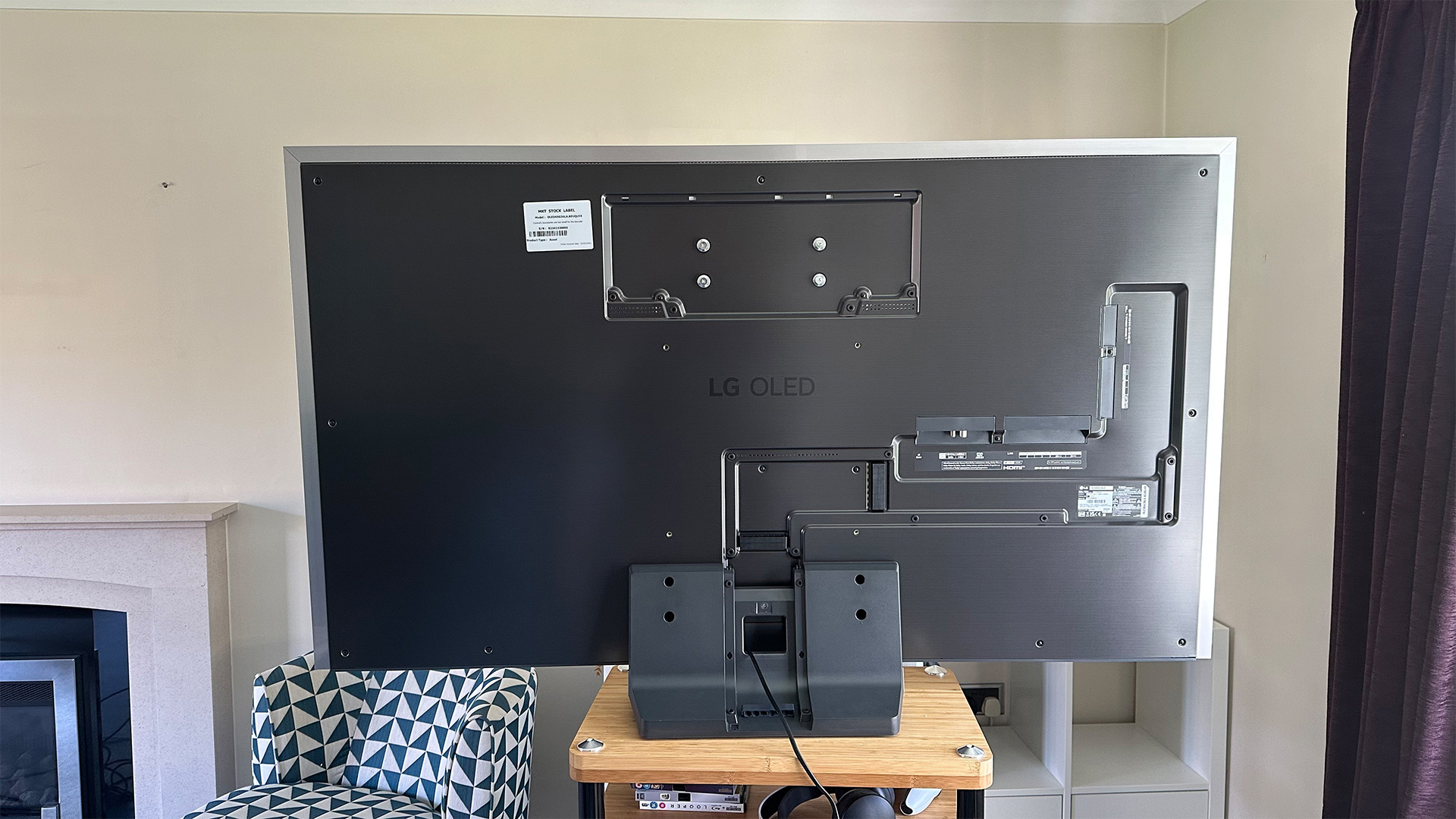
Some loss of colour volume in low-light scenes aside, the G3’s picture delivers quite a lot more excitement than the G2’s. Unfortunately, the same can’t be said for the sound. Comparing the two side-by-side with a number of movies, there’s no getting around the fact that the G3 sounds comparatively dull. The dynamic range is broadly the same and is reasonable by TV standards, allowing for a scene to build in volume roughly as it should, but there’s very little punch or impact. Instead, effects are delivered rather limply.
The Dolby Atmos mode does deliver a fairly impressively wide and tall soundstage with effects that stretch beyond the confines of the TV’s chassis, but it’s less deep and weighty in the bass than the G2. Despite that, it still suffers from the flappy woofer problem that afflicts so many TVs when they’re faced with the super-deep rumblings in chapter two of Blade Runner 2049.
The flappy bass problem can be almost eradicated by switching Dolby Atmos off, and this is our preference. You do of course lose quite a lot of the spatial extension, but it is still fairly open-sounding while also proving more cohesive. Unfortunately, switching off Dolby Atmos doesn’t inject much more punch into proceedings, and the overall delivery is rather soft.
There is one way to inject some extra energy into the G3’s audio performance, and that’s by turning on the AI Sound Pro feature, which is much more upfront and attacking in its delivery. Unfortunately, it’s also bright, thin, and peculiarly clipped so that there's no real body behind sound effects, so it isn’t the solution we were hoping that it might be.
It’s worth noting that the Standard sound mode with Dolby Atmos switched off will be absolutely fine for everyday TV content, and there’s plenty of midrange clarity so that dialogue is always clear. The flappy bass problem is only triggered in quite specific conditions, too, to the extent that some might still prefer to keep Dolby Atmos switched on. It’s just a shame that LG appears to have tuned the G3 to be softer and less engaging than its predecessor.
Verdict
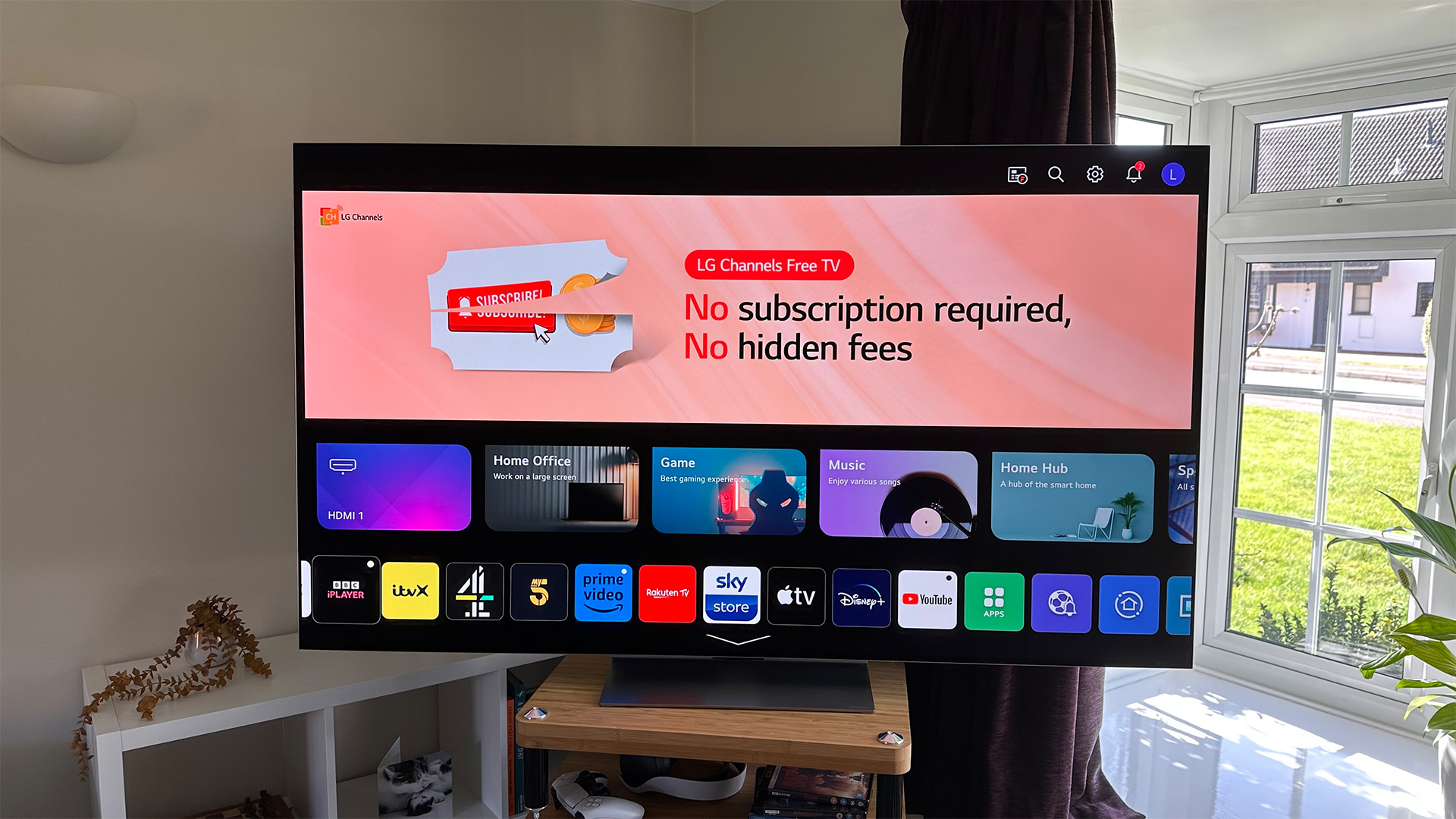
We tend not to kick TVs for not sounding great because, to be frank, almost no TVs sound great. That’s why we recommend adding at least a soundbar to almost every TV we test, and if you do that, how the TV itself sounds doesn’t really matter. Also, while the G3 sounds dull, it doesn’t sound bad, per se, which is why its poor score here doesn’t impact the overall star rating (though it’s absolutely something you should take into consideration if you’re determined to rely on the built-in speakers).
What matters more is the feature set, which is more or less flawless in the case of the G3, and the picture quality which, some low-light paleness aside, is superb. Brighter, more vibrant in most light, more insightful and overall more exciting and impactful, this is one of last year’s very best TVs made better.
Has it done enough to get a recommendation over the non-MLA C3? And will the other MLA and QD-OLED sets that are on the way turn out to be even better? Until we get those TVs in for full testing, we can’t possibly know, but the G3 has certainly set a high benchmark for them to beat.
SCORES
- Picture 5
- Sound 3
- Features 5
MORE:
Also consider the Philips 65OLED937
Here's how the LG G3 vs G4 (2024) compare
Tom Parsons has been writing about TV, AV and hi-fi products (not to mention plenty of other 'gadgets' and even cars) for over 15 years. He began his career as What Hi-Fi?'s Staff Writer and is now the TV and AV Editor. In between, he worked as Reviews Editor and then Deputy Editor at Stuff, and over the years has had his work featured in publications such as T3, The Telegraph and Louder. He's also appeared on BBC News, BBC World Service, BBC Radio 4 and Sky Swipe. In his spare time Tom is a runner and gamer.
- Ketan BharadiaTechnical Editor
-
reginaldperrin In your piece, 'How we test and review products on What Hi-Fi?, (https://www.whathifi.com/news/how-we-test-and-review-products-on-what-hi-fi), you state the following: "Everything is reviewed in our four custom-built, state-of-the-art test rooms in London, Reading and Bath. There are two listening rooms for hi-fi, one for Home Cinema and another devoted to televisions. These give us controlled and consistent environments in which to test equipment. Portable products aside, everything we test is reviewed in these rooms." If, as you say, 'portable products aside, everything we test is reviewed in these rooms', then why the photos of the TV being reviewed sat in, what appears to be, someone's front room? In fact, many of your TV reviews seem to be done in a lounge of late, not a test room. Is this the case? Are your reviews done in dedicated test rooms or not? I notice there are some journalists writing reviews for you now who also do so for other titles. (That's a whole different issue, mind!) But, do these other reviewers on loan from other titles also travel to your test facilities to complete the reviews, or do they do so from their own homes?Reply
